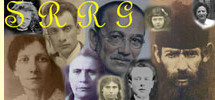



|
PP 32: With the rise and expansion of Islam, the Near Eastern Jews began to develop communities in Spain. Under the fluctuating favor of the Moslem leaders they built up their Spanish, or Sephardic, communities so solidly that when the Babylonian center began to decline under Mongolian invasions, Spanish Jewry could take over the cultural leadership of Israel. Until their destruction by the Inquisition, and the expulsion of the Jews in the year that Columbus discovered the New World, the Sephardic communities evolved their specific form of Judism. It was an eclectic form, combining the truth of the Bible and Talmud with the wisdom of Aristotle and Plato, the liturgical poetry of the prayer books with the style of the Arabian divans. The Sephardic heritage became a colorful mosaic of mysticism and the rationalism, philosophy and talmudism, poetry and science. Meanwhile, within their ghetto walls, the Jewish communities of Italy, France and Germany had been evolving the Ashkenasi pattern of Judiasm. Ashkenaz is the Hebrew name for Germany, where the most populous communities were located. Unlike the Sephardic Jews, the Ashkenazim were isolated from their neighbors, by edict and also by preference. In their centers of learning, traditional talmudism remained "uncontaminated" by non-Jewish culture. There was no place in their writings for worldly poetry and philosophy, but only for heavy volumes of rabbinical commentary and discussion. All life was oriented toward rigorous fulfillment of the commandments, reported in the Torah and expounded in the Talmud. No detail was too trivial to have a root in some religious prescription; the word of God resounded through every act of daily life. In Spain, the Jewish scholars were free to compose their works--secular or religious--either their traditional language or the language of the country. The Ashkenazim banished all foreighn languages from their literature, which was written only in Hebrew, the language of the Bible. For everyday use, Yiddish became their language, and it has remained theirs through years of migration and change. |
This page is hosted at no cost to the public by JewishGen, Inc., a non-profit corporation. If you feel there is a benefit to you in accessing this site, your JewishGen-erosity is appreciated.
© Copyright 2011 Suchostaw Region Research Group. All rights reserved.
Compiled by Susana Leistner Bloch and Edward Rosenbaum.
Back to SRRG Home Page | Jewish Gen Home Page | KehilaLinks Directory | Gesher Galicia | JewishGen Online Worldwide Burial Registry (JOWBR)
Last updated
02/27/2011 by ELR
Copyright © 2011 SRRG